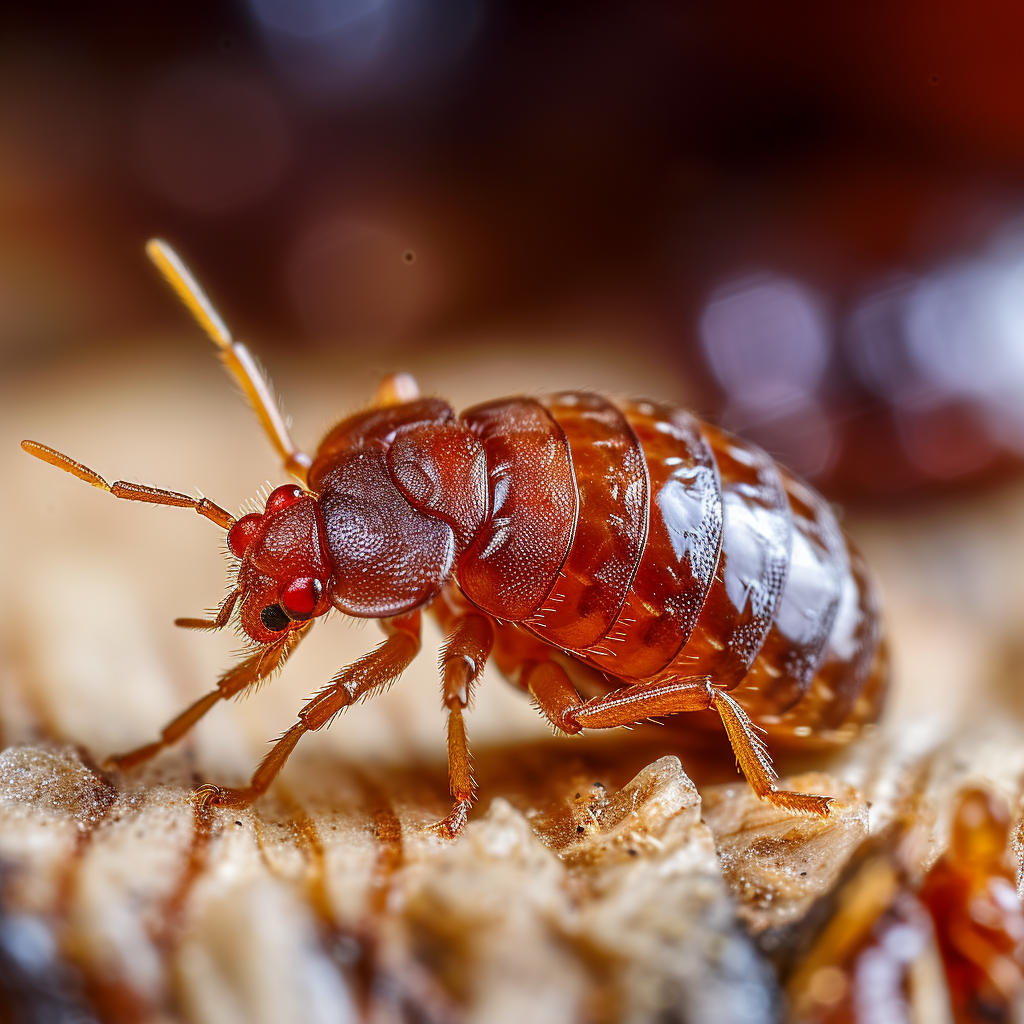Introduction
Bed bugs are a nuisance for any homeowner, and one of the best ways to prevent a full infestation is to catch the signs of bed bugs early on. In this blog, we will discuss the first signs of bed bug infestation and how to take early action to prevent further problems. By being aware of the bed bug first signs and treating them swiftly, you can save yourself a lot of time and stress later on.
Defining Bed Bugs
Bed bugs (also known as Cimicidae) are small, wingless parasites that feed on the blood of humans and other animals. They are typically found in mattresses, box springs, furniture, and even carpets. These pests are oval-shaped, reddish-brown in color, and about the size of a grain of rice. They hide in crevices and cracks, during the day and come out at night to feast on their hosts. Bed bugs bite their hosts, leaving behind an itchy, irritated rash. These insects can reproduce rapidly, so early identification and treatment is important in order to prevent an infestation.
Importance Of Early Detection
Early detection is one of the most important steps in preventing and managing bed bug infestations. Early detection of bed bug activity allows for quick intervention, which is key in minimizing the damage they can cause. By catching the infestation early, you can prevent the spread of bed bugs to other parts of your home or facility and stop them from causing significant problems in your environment. Early warning signs of bed bug activity include spotting signs of their feeding, droppings, and eggs. Additionally, you may recognize small bites on exposed skin, a sweet smell, or rust-colored blood spots on mattresses or bedding. Promptly responding to these potential signs will help you stay ahead of an infestation before it becomes a major problem.
Early Signs of Bed Bugs
Identifying Bed Bugs
One of the most important steps in catching an early bed bug infestation is being able to identify them. Bed bugs are small, oval-shaped insects, ranging in color from white to reddish-brown. They can typically be found within bedding and mattresses, but have been sighted in furniture, carpets, and baseboards as well. Bed bugs are nocturnal creatures, so they may be harder to identify in the daytime. Look for tell-tale signs like shed skins, bloodstains from crushed bugs, and earthy, musty odors. If you notice any of these signs, it’s likely that you have an infestation of bed bugs. Take action quickly to get the problem under control.
Spotting Eggs and Larvae
One of the biggest indicators of bed bug infestations is seeing the eggs and larvae. They appear as small white oval-shaped specks that are easily visible. If you find eggs, it’s a sign that an infestation is present. The larvae may be hiding in seams of mattresses, under carpets, and other areas in the home. To spot them, look for tiny, light yellow bugs that emerge and begin crawling. It’s important to note that larvae and eggs can be difficult to see, so if you think you may have an issue, make sure to use a magnifying glass or a flashlight to inspect harder-to-reach areas.
Common Bed Bug Hotspots
Beds
You can never be too proactive when it comes to protecting your bed from bed bugs. The first step to early alert for bed bugs is to inspect your bed for signs of an infestation. If you can catch the issue quickly, you’ll be able to quickly take the steps necessary to eradicate the pest from your home before too much damage is done. Look for signs of bed bugs around your bed frame, mattress, and other areas where they might hide or lay eggs. Look for reddish-brown stains, dark mottled spots, and molted bed bug skins, which are all signs of an infestation. It’s also important to regularly rotate your mattress and check the edges and crevices where bed bugs may hide. By being proactive and staying vigilant, you can catch an infestation quickly and nip it in the bud before it becomes a much larger problem.
Furniture
When shopping for secondhand furniture, it’s important to be aware of the possibility of a bed bug infestation. Bed bugs are notoriously difficult to get rid of, so early detection is key. Before bringing any furniture into your home, inspect it for any small footprints or bloodstains, which are tell-tale signs of an infestation. To catch any infestations quickly, perform regular inspections of your furniture and beds for signs of bed bug activity. If you think you may have found evidence of a bed bug infestation, contact a professional to help you eliminate the problem.
Wall Hangings
Wall hangings can be a great way to decorate your home, but they can also provide an unexpected hiding spot for bed bugs. Sticking to light, easy-to-clean materials like canvas and metal for your wall hangings can help you identify any unwelcome pests that may be taking up residence in your home. If your home is already experiencing an infestation, it is very important to keep an eye out for bed bugs on wall hangings, as quickly identifying any traces of bed bugs can help you take the necessary steps to reduce the spread and severity of the infestation.
Early Detection Strategies
Inspecting Rugs and Carpets
When it comes to inspecting rugs and carpets for any signs of bed bugs, it helps to keep an eye out for dark spots or streaks of blood on the fibers. As well as any dead bed bugs, you may also see their discarded exoskeletons in the folds of the fibers. Make sure to be thorough when conducting a visual inspection of these materials as bed bugs can be very small and well-hidden. You should also consider having professional pest control services come out and conduct a thorough inspection of your carpets and rugs to make sure they are safe from infestation. With their technological advancements and expertise, they will be able to spot any potential signs of bed bug activity and help get things back to normal quickly.
Checking Decorative Pillows and Throws
Most homeowners don’t consider the idea that their decorative pillows and throws may be harboring bed bugs. Even if you haven’t noticed any of the signs of infestation, if these decorative items have been stored in a place that could be infested it’s important to check them for bed bugs. Give each item a thorough lookovers, feeling for any signs of shells, eggs, or the actual bugs themselves. If you discover any evidence of bed bugs it’s important that you immediately take action to eradicate the problem to stop the infestation from spreading any further.
Searching In Seams & Hemlines
When searching for bed bugs, it’s important to check more than just the classic signs of infestation. Checking in the seams and hemlines of clothing and furniture is key in being able to catch an infestation before it gets out of hand. Bed bugs will hide in these crevices so you need to be thorough in your search. Pay special attention to the joints in a bed frame, cushions in couches and chairs, and the seams of mattresses. This can help you catch an infestation early while there are still few signs. Don’t neglect to look in these areas because they can make a huge difference when it comes to early alerts.
Early Detectors for Bed Bugs
Using Dogs
Bed bug detection dogs are becoming increasingly popular for quickly determining if an infestation is present. Their highly developed sense of smell can detect the odor of bed bugs, even in the early stages of an infestation, before they can be seen. Using a specialized training technique, dogs can be trained to detect the odors of bed bugs in public and private spaces such as apartments, condos, hotel rooms, movie theaters, and more. In addition to their effectiveness, they offer a non-invasive approach that can be conducted faster than visual inspections. By investing in bed bug detection dogs, businesses and rental properties can take preventative steps to catch any infestations quickly before they get out of hand.
Monitoring Devices
When it comes to detecting and preventing bed bug infestations, one of the best solutions are electronic monitoring devices. These devices use various methods such as CO2 or heat emission detection to detect bed bugs and check for activity that could be indicative of a larger infestation. Electronic monitoring devices are great because they allow you to detect tiny, hidden populations of bed bugs that would otherwise go undetected by other methods. They’re also easy to install, and they can be set up to send alerts to your phone when activity is detected, so you can catch the problem before it gets too bad. That way, treatments can be initiated quickly before an infestation can spread and cause further damage.
How Early Detection Can Help
Eliminating the Spread of the Infestation
It is crucial to take preventive steps to keep the bed bug infestation from spreading any further. The first step is to create a barrier between bed bugs and humans. This can be done by regularly laundering bedding, vacuuming mattresses and box springs, and encasing them with a protective cover to stop bugs from getting in or out. Next, thoroughly inspect and clean any items that have been exposed to bed bugs, like furniture or luggage, as these can easily spread the infestation between homes and living spaces. Lastly, be sure to contact a professional exterminator if you think you have a bed bug issue. They can help to properly identify any infestations and get rid of the problem with specialized treatments. Taking these preventive measures can go a long way towards stopping a bed bug infestation from spreading.
Minimizing Damage and Health Hazards
Early detection of a bed bug infestation is key to minimizing damage and health hazards. Regular inspections of your home or business, in particularly mattress, furniture, and linen is the best way to prevent an infestation from magnifying. Additionally, if you suspect there is an infestation, be certain to call a professional pest control specialist right away, especially if you have any known allergies or sensitivities to the bites or allergens they leave behind. Quick treatment is essential for stopping the spread of the infestation, and can also help prevent long-term health hazards.
Tips for Preventing Bed Bug Infestations
Regularly Washing Linens & Bedding
Washing your sheets, blankets, and other bed linens regularly is an important line of defense in protecting against bed bugs. Heat-tolerant items can be washed in hot water, as most insecticides won’t kill bed bugs. Washing items in hot water can cause the bed bugs to die, thus breaking the cycle of a potential infestation. However, due to the re-infestation risk, laundering alone usually isn’t enough to effectively eliminate all of the bugs. Be sure to use a hot dryer to further reduce the risk of survival. A tumble dry on high heat for at least 30 minutes or more is ideal. Keep in mind that a vigorous thrashing of items in the dryer will help to dislodge eggs from fabrics so that they are then killed from the heat. Although nothing can guarantee the complete termination of bed bugs, regular laundering of linens and bedding is an efficient and cost-effective way to reduce the likelihood of an outbreak.
Using Bed Bug-proof Encasements
Bed bug-proof encasements are an important tool in the fight against a bed bug infestation. These encasements are designed with very small zippers and tightly woven mesh, making them effective barriers to keep bed bugs out of mattresses and box springs. Any bed bug already inside a mattress or box spring will be trapped, and will starve to death since they won’t be able to feed on any human or animal hosts. Plus, bed bug-proof encasements will last for up to five years, making them a smart long-term investment in protection against these pests. If you have noticed signs of a bed bug infestation, or if you are at risk of a bed bug invasion, using bed bug-proof encasements can be an effective first step towards catching and eliminating the infestation quickly.
Conducting Regular Inspections
Regular inspections are one of the best ways to catch an infestation of bed bugs quickly. It is important to keep an eye out for possible signs of an infestation such as fecal matter, moulted skins, or actual bed bugs in the areas where people sleep or rest. You can use a flashlight to help scan your bed and mattress for potential bed bugs. Be sure to check for crevices in the bed frame, headboard, furniture, and pockets of items such as books, toys, and electronics. Maintaining regular inspections is one of the most effective ways to give you an early alert of a potential bed bug infestation.
Conclusion
Early Detection is Key
Early detection of bed bugs is key to preventing an infestation from occurring or getting worse. With early alert methods, you can catch an infestation quickly, before it makes its way further into your home. So, keeping an eye out for signs of bed bugs – such as rust-colored mottled spots on sheets, drowsy insects clustered on furniture and walls, and clusters of eggs tucked away in the tiniest of crevices – can help you catch an infestation right away. If you act quickly, you can prevent a full-blown infestation from occurring. Early detection of bed bugs can be your best ally in controlling the spread of these annoying and dangerous pests.
Prevention is Best
Preventing a bed bug infestation is always best, as dealing with one is a costly and time consuming endeavor. There are several preventative methods that can help protect against an infestation, such as regularly vacuuming, washing bed linens in hot water, and thoroughly inspecting all used furniture and clothing before bringing it into your home. Additionally, investing in an early alert system for bed bugs can also help protect your home. These systems use scent detection and specialized traps to effectively alert you of a bed bug infestation before it becomes a problem. Taking preventative steps to keep your home bed bug free is the easiest and most effective way to avoid an infestation.
Resources
Health Department
When it comes to maintaining public health, including that of your home, it is essential to be aware of any potential threats, including bed bugs. These pests can quickly spread to other areas of the home, causing disruption to daily life. To help mitigate this risk, we at the local health department advise taking proactive steps to identify potential infestations early on. This includes frequent inspections and regular use of early alert systems designed to notify you of any suspicious activity. By doing so, you can take action against these invaders before the problem grows.
Pest Control Professionals
Bed bugs are a serious issue, especially in hotels and multi-unit dwellings. Early detection of a bed bug infestation is critical because it allows the problem to be addressed and solved quickly. Pest control professionals, that is why early alert systems for bed bugs are so incredibly important. Implementing early alerts in a building or property can help to identify infestations before they become a major issue. Early alert systems can detect the presence of bed bugs without using traditional treatments which can be costly. Additionally, early alert systems allow pest control professionals to put in place preventative measures that will help stop any further spread of the bed bugs. Not only is this a time saver, but it also allows for reduced cost because it reduces the amount of time and the type of treatments needed to eliminate the infestation. Utilizing early alert systems for bed bugs enables pest control professionals to catch the infestation quickly and solve it before it exacerbates.
Educational Resources
It is important to educate yourself and your family on various aspects of bed bugs, including signs of infestation, how to recognize them, and how to prevent them. There are a number of educational resources available to the public, such as the Centers for Disease Control and Prevention’s website, which offers tips on bed bug prevention and treatment. It is also important to speak with local pest control experts who can provide further information and resources for both preventative and treatment options for bed bug infestations. Early detection is key to effectively reducing the impact of bedbugs, and having access to educational resources is an important step in that process.



